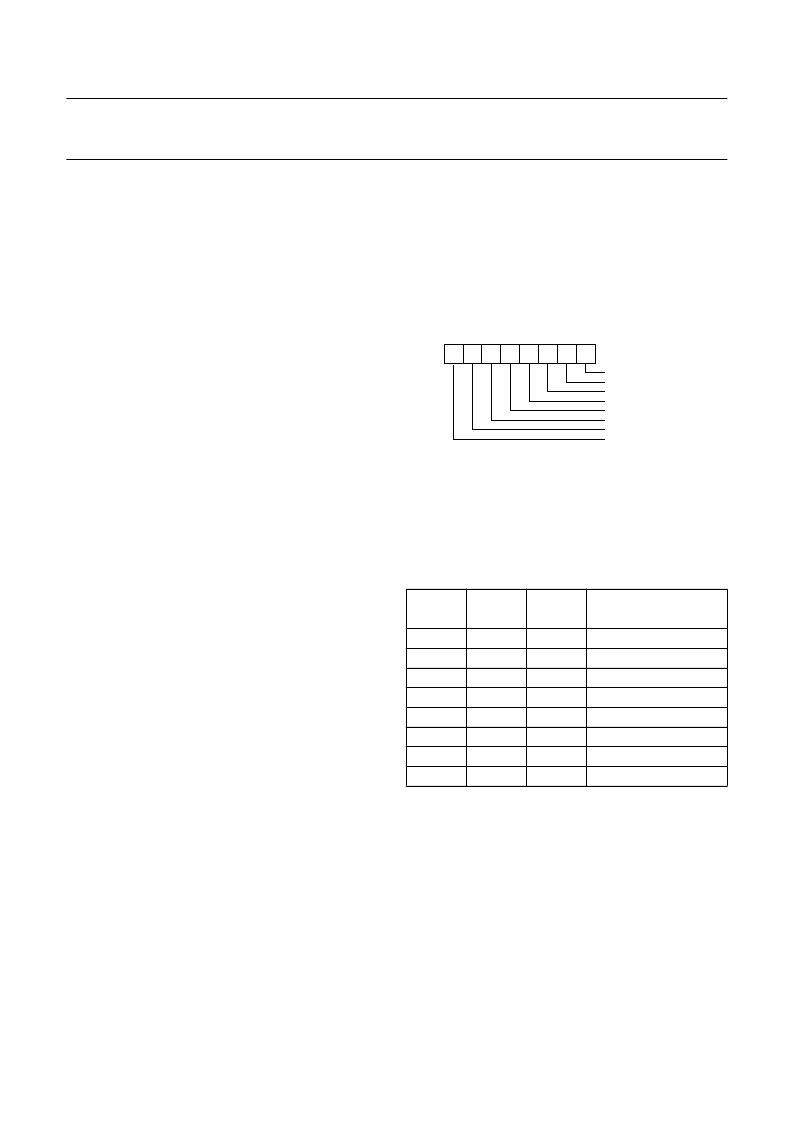- 您現(xiàn)在的位置:買賣IC網(wǎng) > PDF目錄382720 > UDA1325 (NXP Semiconductors N.V.) Universal Serial Bus USB CODEC PDF資料下載
參數(shù)資料
| 型號(hào): | UDA1325 |
| 廠商: | NXP Semiconductors N.V. |
| 元件分類: | Codec |
| 英文描述: | Universal Serial Bus USB CODEC |
| 中文描述: | 通用串行總線解碼器 |
| 文件頁數(shù): | 35/52頁 |
| 文件大小: | 310K |
| 代理商: | UDA1325 |
第1頁第2頁第3頁第4頁第5頁第6頁第7頁第8頁第9頁第10頁第11頁第12頁第13頁第14頁第15頁第16頁第17頁第18頁第19頁第20頁第21頁第22頁第23頁第24頁第25頁第26頁第27頁第28頁第29頁第30頁第31頁第32頁第33頁第34頁當(dāng)前第35頁第36頁第37頁第38頁第39頁第40頁第41頁第42頁第43頁第44頁第45頁第46頁第47頁第48頁第49頁第50頁第51頁第52頁

1999 May 10
35
Philips Semiconductors
Preliminary specification
Universal Serial Bus (USB) CODEC
UDA1325
V
ALIDATE BUFFER
Command: FAh.
Data: none.
When the microcontroller has written data into an IN buffer,
it should set the buffer full flag by the validate buffer
command. This indicates that the data in the buffer are
valid and can be sent to the host when the next IN token is
received.
General commands
R
EAD CURRENT FRAME NUMBER
Command: F5h.
Data: read 1 or 2 bytes.
This command is followed by one or two data reads and
returns the frame number of the last successfully received
SOF. The frame number is eleven bits wide. The frame
number is returned least significant byte first. In case the
user is only interested in the lower 8 bits of the frame
number only the first byte needs to be read.
I
2
C MASTER/SLAVE INTERFACE
The I
2
C module implements a master/slave I
2
C-bus
interface with integrated shift register, shift timing
generation and slave address recognition. It is compliant
to the I
2
C-bus specification IC20/Jan92. I
2
C standard
mode (100 kHz SCL) and fast mode (400 kHz) are
supported. Low speed mode and extended 10 bit
addressing are unsupported.
Characteristics of the I
2
C-bus
The I
2
C-bus is for 2-way, 2-line communication between
different ICs or modules. The two lines are a serial data
line (SDA) and a Serial Clock Line (SCL). Both lines must
be connected to V
DDE
via a pull-up resistor.
The timing definition of the I
2
C-bus is given in Fig.7.
Programmer’s view
For a detailed description of the I
2
C-bus protocol refer to
Philips Integrated Circuits Data Handbook IC20, 8XC552.
The programmer’s view of the I
2
C library function is -with
one exception- identical to that of the 8XC552
microcontroller. Only the bit rate frequency selection in
S1CON and the handling of the Timer 1 overflow
information deviates to accommodate 400 kHz operation.
S1CON register
The CPU can read from and write to this 8-bit SFR.
Two bits are effected by the SIO1 hardware: the SI bit is
set when a serial interrupt is requested, and the STO bit is
cleared when a STOP condition is present on the I
2
C-bus.
The STO bit is also cleared when ENS1 = ‘0’. Reset
initializes S1CON to 00h.
CR2, 1
AND
0 -
THE CLOCK RATE BITS
These three bits determine the serial clock frequency
when SIO1 is in a master mode.
The various serial rates are shown in Table 28.
Table 28
Serial clock rates (SCL line)
When the CR bits are ‘111’, the maximum bit rate for the
data transfer will be derived from the Timer 1 overflow rate
divided by 2 (i.e. every time the Timer 1 overflows, the
SCL signal will toggle).
CR2
CR1
CR0
I
2
C BIT FREQUENCY
(kHz)
0
0
0
0
1
1
1
1
0
0
1
1
0
0
1
1
0
1
0
1
0
1
0
1
1200
600
400
300
150
100
75
3.9 ... 501
0
0
0
0
0
0
0
0
CR0
CR1
AA
SI
STO
STA
ENS1
CR2
7
6
5
4
3
2
1
0
Power On Value
相關(guān)PDF資料 |
PDF描述 |
|---|---|
| UDA1325H | Universal Serial Bus USB CODEC |
| UDA1325PS | Universal Serial Bus USB CODEC |
| UDA1326PS | USB AUDIO-CODEC(通用串行總線音頻編解碼器) |
| UDA1331H | Universal Serial Bus USB Audio Playback Peripheral APP |
| UDA1334BT | Low power audio DAC |
相關(guān)代理商/技術(shù)參數(shù) |
參數(shù)描述 |
|---|---|
| UDA1325H | 制造商:PHILIPS 制造商全稱:NXP Semiconductors 功能描述:Universal Serial Bus USB CODEC |
| UDA1325PS | 制造商:PHILIPS 制造商全稱:NXP Semiconductors 功能描述:Universal Serial Bus USB CODEC |
| UDA1328 | 制造商:PHILIPS 制造商全稱:NXP Semiconductors 功能描述:Multi-channel filter DAC |
| UDA1328T | 制造商:PHILIPS 制造商全稱:NXP Semiconductors 功能描述:Multi-channel filter DAC |
| UDA1330A | 制造商:PHILIPS 制造商全稱:NXP Semiconductors 功能描述:Low-cost stereo filter DAC |
發(fā)布緊急采購,3分鐘左右您將得到回復(fù)。